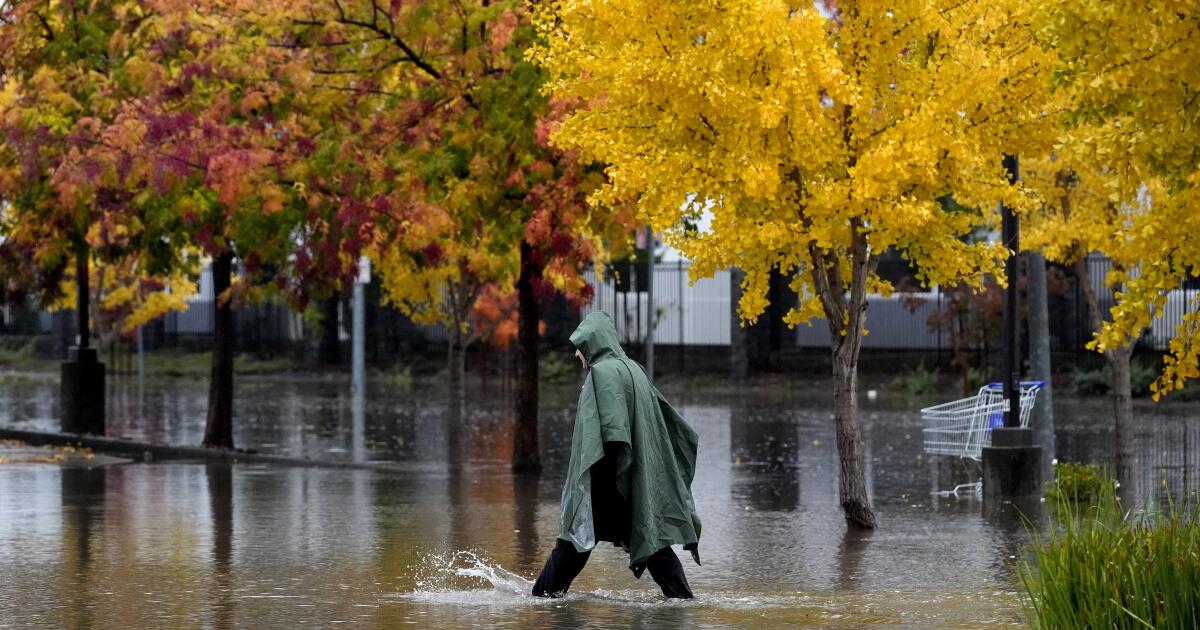MILAN — Russian troops declare to have developed a flamethrower drone designed to counter Ukrainian first-person-view drones carrying an incendiary burning combination, a tactic consultants say will probably be ineffective towards transferring targets.
On Nov. 14, footage was printed by Russian Telegram channels displaying what seemed to be an unmanned aerial automobile outfitted with a flammable combination which, as soon as within the air, spluttered robust flames.
“It appears to be a industrial quadcopter-type drone carrying a small tank crammed with a flammable substance, in all probability weighing round one or two kilos, which it may well spray downward, making a flamethrower impact with an efficient vary of two to 3 meters,” Federico Borsari, resident fellow on the U.S. Middle for European Coverage Evaluation stated of the video.
Specialists stated that the platform appears to have been particularly developed to focus on adversary drones. Samuel Bendett, advisor on Russian navy expertise on the Middle for Naval Analyses, famous that within the video, an unidentified voice could be heard saying, “we primarily joined one other UAV.”
This Russian countermeasure is probably going a response to the Ukrainian navy use of FPV drones to spray thermite over forested areas the place enemy troops and gear are suspected.
Nevertheless, some analysts are skeptical in regards to the effectiveness of the flamethrowers, as precisely steering the flame stream in the direction of decently fast-moving Ukrainian drones dropping thermite can be tough.
“If such a [Russian] drone is to do this to a different UAV, it’s a must to get in place and be very exact – this will likely work towards some that hover in place for remark, in any other case if the drone is transferring, will probably be very troublesome to shoot such a liquid at a transferring goal,” Bendett stated.
Borsari noed that the restricted quantity of flammable resolution the Russian drone can carry is one other necessary limitation, which he estimates to be enough “barely” for a single sortie earlier than needing to be refilled.
“Because the drone exhausts the flammable liquid and the strain of the spraying mechanism diminishes, the returning warmth might harm the drone itself and make it crash if the operator retains it hovering,” Borsari added.
In early September, when the primary footage of Ukrainian fire-dropping FPVs emerged, analysts informed Protection Information that such methods, in addition to being an inexpensive different to show enemy places, are additionally psychological instruments.
Elisabeth Gosselin-Malo is a Europe correspondent for Protection Information. She covers a variety of matters associated to navy procurement and worldwide safety, and makes a speciality of reporting on the aviation sector. She relies in Milan, Italy.



















![JOB POST: Patent Searching Professional at Khurana & Khurana [Multiple Location; 3+ years PQE; Patent Searching]: Apply Now!](https://i1.wp.com/cdn.lawctopus.com/wp-content/uploads/2025/07/JOB-POST-Patent-Searching-Professional-at-Khurana-Khurana.jpg?w=120&resize=120,86&ssl=1)


